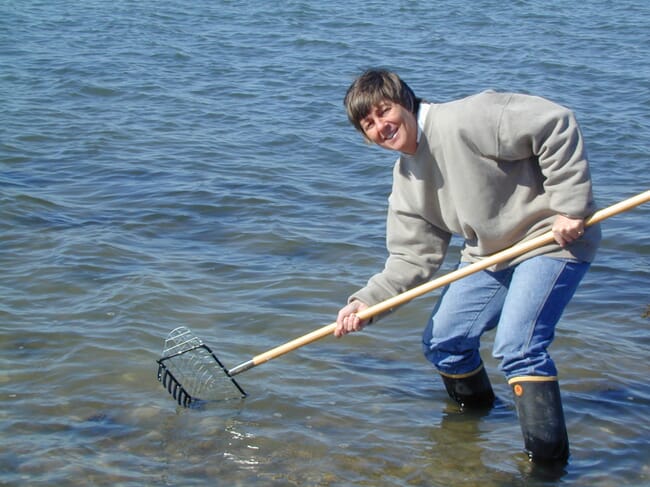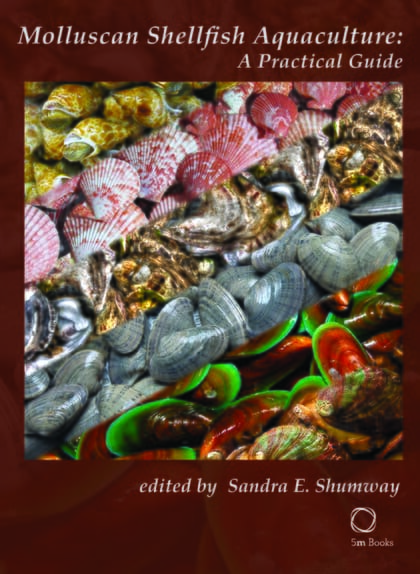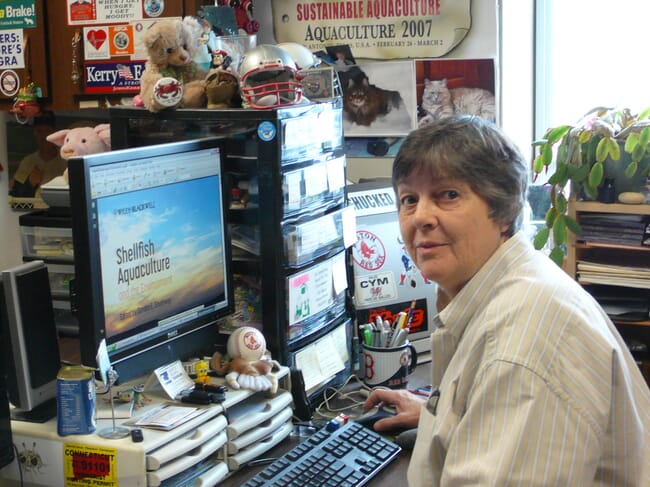
Can you give me a very brief overview of your aquaculture career?
I began digging clams and quahogs with my dad at our summer house when I was about 3 years old. Many science fair projects later, I went to college, majored in marine science and then went to Wales as a Marshall Scholar. I studied marine invertebrate physiology for my PhD and used molluscs as some of my experimental animals. I then went to New Zealand and again, molluscs (this time snails) were the major group of choice. From there it was back to the US as a post-doc in New York, where they wanted someone to provide expertise on oysters.
By then colleagues recognised me as a shellfish/mollusc scientist, although I have worked on many other groups. I worked in Maine for a decade, in shrimp and molluscs, then taught marine science for a decade while continuing my research on molluscs and impacts of toxic algae. More and more my research was focused on applied questions posed by the industry and I enjoy being able to provide useful information to the user community. I have continued to focus my research efforts on topics of concern to the shellfish industry, such as harmful algal blooms, mitigation of biofouling and now microplastics.
What inspired you to devise Molluscan shellfish aquaculture: a practical guide?
I regularly receive requests for general information regarding shellfish and many of those pertain to aquaculture. There was very little published information available to recommend or share, and what existed was outdated and scattered. I also realised that many of the pioneers and experts had retired or were contemplating the same and wanted to capture that accumulated knowledge under one cover.
Who’s the target audience?
The book is for anyone interested in molluscan shellfish aquaculture, whether newcomers to the field or experienced growers and scientists. Chapters are included to cover all of the major groups of shellfish and some of the minor ones. I hope that it will provide a basis for new growers to get them started and a source of updated information for scientists and growers alike.

Molluscan shellfish aquaculture: a practical guide, has just been published by 5m Books (click on image to enlarge)
What sort of contribution have you had from aquaculture producers themselves?
Many of the chapters have been written or co-authored by commercial growers, others by leading experts in their related academic fields. A number of the authors are shellfish biologists who left academia for successful commercial enterprises and their knowledge and experiences are invaluable. Many of them collaborate regularly on scientific efforts designed to assist growth of the shellfish aquaculture industry.
If you were considering the ideal place globally to set up a successful mollusc farm where would it be and what species would you produce?
Yikes! This would depend on so many factors, the first would be courage. Shellfish culture is fraught with challenges and requires knowledge, financial backing, physical strength and stamina, perseverance and a modicum of luck – avoidance of major storms, diseases, toxins, predators and more. It is easy to look globally today and see so much shellfish culture taking place, but what is not seen is the incredibly difficult path and hard work of those who have gone before to attain the current successes. If I were thinking about only success and money, I would grow oysters in a pristine area, with panache. If i were thinking about my favourite species, location and known commercial success, I would grow quahogs in Rhode Island!
What are the main benefits of molluscan shellfish farming?
I wrote an editorial on this subject 20 years ago – and it is as true today as then. Shellfish are a benefit to the ecology and environment, the economy, and provide a high-quality source of protein. Shellfish culture can be undertaken on large commercial scales or by individuals as subsistence efforts. I produced an entire book on this topic: Shellfish Aquaculture and the Environment (Wiley-Blackwell 2011).
What are the major hurdles for the molluscan shellfish sector in the US/the West to overcome before it can achieve its full potential?
Shellfish aquaculture is no longer a difficult undertaking in terms of knowledge and know-how. In many countries, it is revered and encouraged. In the United States, I believe the myriad of regulatory processes, coupled with availability and accepted use of coastal space are the greatest impediments to expanded shellfish culture.

How would you like to see the global molluscan shellfish aquaculture sector develop over the coming decade?
I hope it will continue to expand on all levels globally. Shellfish aquaculture is green – shellfish are primary consumers – and provides ecosystem services, jobs and high-quality protein, often in developing regions where food and employment are major benefits.
Looking at the bigger picture, do you think molluscan shellfish aquaculture can play a role in the battle against climate change, environmental degradation and growing global demand for healthy seafood?
Absolutely. As was made clear in the recent 20-year review of aquaculture, that was published in Nature. Shellfish aquaculture: good for the ecology, good for the economy, good for you!
Further information
A copy of Molluscan Shellfish Aquaculture can be ordered here.




